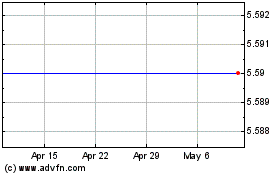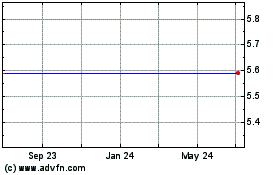BioDelivery Sciences International, Inc. (NASDAQ: BDSI), a rapidly
growing specialty pharmaceutical company dedicated to patients
living with serious and complex chronic conditions, today announced
that a large national pharmacy benefit manager (PBM), along with
various healthcare insurance companies, have expanded access for
Symproic® to more than 25 million additional commercial covered
lives by placing Symproic in preferred formulary position beginning
on January 1, 2020. This brings the total to more than 40
million commercially covered lives that have received expanded
access to Symproic in preferred formulary position since October 1,
2019.
In addition, the Company announced that 2019
full year total company net sales are expected to be at the upper
end of previously provided guidance of $105-$110 million, driven by
continued strong fourth quarter performance of both BELBUCA®
(buprenorphine buccal film), CIII and Symproic. The
Company also reiterated its previously announced 2020 full year net
sales guidance of $150-$160 million for BELBUCA and $165-$175
million for total company.
“I am very pleased by the significant progress
made in ensuring patients suffering from opioid induced
constipation have appropriate access to our
clinically-differentiated drug, Symproic,” stated Herm Cukier, CEO
of BDSI. “Gaining such a substantial additional number of
covered lives enables us to build upon the very strong momentum we
experienced during the fourth quarter for both BELBUCA and
Symproic, and further adds to my excitement and enthusiasm for a
very successful 2020 and the future of BDSI.”
About Symproic
Symproic® (naldemedine) tablets 0.2 mg is
indicated for the treatment of OIC in adult patients with chronic
non-cancer pain, including patients with chronic pain related to
prior cancer or its treatment who do not require frequent (e.g.,
weekly) opioid dosage escalation. Symproic® was made available to
patients in the U.S. in October 2017.
Important Safety Information about
Symproic®
CONTRAINDICATIONS
Patients with known or suspected
gastrointestinal (GI) obstruction and patients at increased risk of
recurrent obstruction, due to the potential for GI perforation.
Patients with a history of a hypersensitivity
reaction to Symproic. Reactions have included bronchospasm and
rash.
WARNINGS AND PRECAUTIONS
Cases of GI perforation have been reported with
use of another peripherally acting opioid antagonist in patients
with conditions that may be associated with localized or diffuse
reduction of structural integrity in the wall of the GI tract.
Monitor for the development of severe, persistent, or worsening
abdominal pain; discontinue if this symptom develops.
Symptoms consistent with opioid withdrawal,
including hyperhidrosis, chills, increased lacrimation, hot
flush/flushing, pyrexia, sneezing, feeling cold, abdominal pain,
diarrhea, nausea, and vomiting have occurred in patients treated
with Symproic.
Patients having disruptions to the blood-brain
barrier may be at increased risk for opioid withdrawal or reduced
analgesia. Take into account the overall risk-benefit profile when
using Symproic in such patients. Monitor for symptoms of opioid
withdrawal in such patients.
DRUG INTERACTIONS
Avoid use with strong CYP3A inducers (e.g.,
rifampin) because they may reduce the efficacy of Symproic.
Use with moderate (e.g., fluconazole) and strong
(e.g., itraconazole) CYP3A inhibitors and P-glycoprotein inhibitors
(e.g., cyclosporine) may increase Symproic concentrations. Monitor
for potential adverse reactions.
Avoid use of Symproic with another opioid
antagonist due to potential for additive effect and increased risk
of opioid withdrawal.
USE IN SPECIFIC POPULATIONS
Symproic crosses the placenta and may
precipitate opioid withdrawal in a fetus due to the immature fetal
blood-brain barrier. Symproic should be used during pregnancy only
if the potential benefit justifies the potential risk. Because of
the potential for serious adverse reactions, including opioid
withdrawal in breastfed infants, a decision should be made to
discontinue breastfeeding or discontinue the drug, taking into
account the importance of the drug to the mother.
Avoid use in patients with severe hepatic
impairment. No dose adjustment of Symproic is required in patients
with mild or moderate hepatic impairment.
ADVERSE REACTIONS
The most common adverse reactions with Symproic
as compared to placebo in clinical trials were: abdominal pain (8%
vs 2%), diarrhea (7% vs 2%), nausea (4% vs 2%), and gastroenteritis
(2% vs 1%).
In pooled Studies 1 and 2, the incidence of
adverse reactions of opioid withdrawal was 1% (8/542) for Symproic
and 1% (3/546) for placebo. In Study 3 (52-week data), the
incidence was 3% (20/621) for Symproic and 1% (9/619) for
placebo.
To report suspected Adverse Reactions, contact
Shionogi at 1-800-849-9707 or FDA at 1-800-FDA-1088 or
www.fda.gov/medwatch.
Please see accompanying Full Prescribing
Information including Medication Guide for Symproic or visit
www.symproic.com/pi.
References:
- Sehgal N, Colson J, Smith HS. Chronic pain treatment with
opioid analgesics: benefits versus harms of long-term therapy.
Expert Rev Neurother. 2013;13:1201-1220.
- Camilleri M, Drossman DA, Becker G, Webster LR, Davies AN, Mawe
GM. Emerging treatments in neurogastroenterology: a
multidisciplinary working group consensus statement on
opioid-induced constipation. Neurogastroenterol Motil. 2014;26:
1386-1395.
- Kalso E, Edwards JE, Moore RA, McQuay HJ. Opioids in chronic
noncancer pain: systematic review of efficacy and safety. Pain.
2004;112:372–80.
- Cook SF, Lanza L, Zhou X, et al. Gastrointestinal side effects
in chronic opioid users: results from a population based survey.
Aliment Pharmacol Ther. 2008;27(12):1224-1232.
- Brown RT, Zuelsdorff M, Fleming M. Adverse effects and
cognitive function among primary care patients taking opioids for
chronic nonmalignant pain. J Opioid Manag. 2006;2(3):137–146.
- Tuteja AK, Biskupiak J, Stoddard GJ, Lipman AG. Opioid induced
bowel disorders and narcotic bowel syndrome in patients with
chronic non-cancer pain. Neurogastroenterol Motil.
2010;22(4):424-430.
IMPORTANT SAFETY INFORMATION ABOUT
BELBUCA®
BELBUCA® (buprenorphine buccal film), CIII is
indicated for the management of pain severe enough to require
daily, around-the-clock, long-term opioid treatment and for which
alternative treatment options are inadequate.
Limitations of Use
Because of the risks of addiction, abuse, and
misuse with opioids, even at recommended doses, and because of the
greater risks of overdose and death with long-acting opioid
formulations, reserve BELBUCA® for use in patients for whom
alternative treatment options (e.g., non-opioid analgesics or
immediate-release opioids) are ineffective, not tolerated, or would
be otherwise inadequate to provide sufficient management of
pain.
BELBUCA® is not indicated as an as-needed (prn)
analgesic.
WARNING: ADDICTION, ABUSE, AND MISUSE; RISK EVALUATION AND
MITIGATION STRATEGY (REMS); LIFE-THREATENING RESPIRATORY
DEPRESSION; ACCIDENTAL EXPOSURE; NEONATAL OPIOID WITHDRAWAL
SYNDROME; and RISKS FROM CONCOMITANT USE WITH BENZODIAZEPINES AND
OTHER CNS DEPRESSANTSAddiction, Abuse, and
MisuseBELBUCA® exposes patients and other users to
the risks of opioid addiction, abuse, and misuse, which can lead to
overdose and death. Assess patient’s risk prior to prescribing
BELBUCA®, and monitor patients regularly for these behaviors and
conditions.Risk Evaluation and Mitigation Strategy
(REMS)To ensure that the benefits of opioid
analgesics outweigh the risks of addiction, abuse, and misuse, the
FDA has required a REMS for these products. Under the requirements
of the REMS, drug companies with approved opioid analgesic products
must make REMS-compliant education programs available to healthcare
providers. Healthcare providers are strongly encouraged to
- complete a REMS-compliant education
program,
- counsel patients and/or their caregivers, with every
prescription, on safe use, serious risks, storage, and disposal of
these products,
- emphasize to patients and their caregivers the
importance of reading the Medication Guide every time it is
provided by their pharmacist, and
- consider other tools to improve patient, household, and
community safety.
Life-Threatening Respiratory
DepressionSerious, life-threatening, or fatal
respiratory depression may occur with use of BELBUCA®. Monitor for
respiratory depression, especially during initiation of BELBUCA® or
following a dose increase.Accidental
ExposureAccidental exposure to even one dose of
BELBUCA®, especially by children, can result in a fatal overdose of
buprenorphine.Neonatal Opioid Withdrawal
SyndromeProlonged use of BELBUCA® during pregnancy
can result in neonatal opioid withdrawal syndrome, which may be
life-threatening if not recognized and treated, and requires
management according to protocols developed by neonatology experts.
If opioid use is required for a prolonged period in a pregnant
woman, advise the patient of the risk of neonatal opioid withdrawal
syndrome and ensure that appropriate treatment will be
available.Risks from Concomitant Use with
Benzodiazepines or Other CNS
DepressantsConcomitant use of opioids with
benzodiazepines or other central nervous system (CNS) depressants,
including alcohol, may result in profound sedation, respiratory
depression, coma, and death. Reserve concomitant prescribing for
use in patients for whom alternative treatment options are
inadequate; limit dosages and durations to the minimum required;
and follow patients for signs and symptoms of respiratory
depression and sedation. |
About
BELBUCA®
BELBUCA® is contraindicated in patients with
significant respiratory depression; acute or severe bronchial
asthma in an unmonitored setting or in the absence of resuscitative
equipment; known or suspected gastrointestinal obstruction,
including paralytic ileus; and hypersensitivity (e.g., anaphylaxis)
to buprenorphine.
BELBUCA® contains buprenorphine, a Schedule III
controlled substance. As an opioid, BELBUCA® exposes users to the
risks of addiction, abuse, and misuse. Although the risk of
addiction in any individual is unknown, it can occur in patients
appropriately prescribed BELBUCA® and in those who obtain the drug
illicitly. Addiction can occur at recommended doses and if the drug
is misused or abused.
Potential serious adverse events caused by
opioids include addiction, abuse, and misuse; life-threatening
respiratory depression; neonatal opioid withdrawal syndrome; risks
due to interactions with benzodiazepines or other central nervous
system depressants; risk of life-threatening respiratory depression
in patients with chronic pulmonary disease or in elderly,
cachectic, or debilitated patients; adrenal insufficiency; QTc
prolongation; severe hypotension; risks of use in patients with
increased intracranial pressure, brain tumors, head injury, or
impaired consciousness; hepatotoxicity; risk of overdose in
patients with moderate or severe hepatic impairment;
anaphylactic/allergic reactions; risk of use in patients with
gastrointestinal conditions; increased risk of seizures in patients
with seizure disorders; risks of use in cancer patients with oral
mucositis; risks of driving and operating machinery.
The most common adverse reactions (≥5%) reported
by patients treated with BELBUCA® in the clinical trials were
nausea, constipation, headache, vomiting, fatigue, dizziness,
somnolence, diarrhea, dry mouth, and upper respiratory tract
infection.
For full Prescribing Information,
including Boxed Warning, visit www.belbuca.com.
To report SUSPECTED ADVERSE REACTIONS, contact
BioDelivery Sciences International, Inc. at 1-800-469-0261 or FDA
at 1-800-FDA-1088 or www.fda.gov/safety/medwatch.
About BioDelivery Sciences
International, Inc.
BioDelivery Sciences International, Inc.
(NASDAQ: BDSI) is a commercial-stage specialty pharmaceutical
company dedicated to patients living with chronic conditions. BDSI
has built a portfolio of products that includes utilizing its novel
and proprietary BioErodible MucoAdhesive (BEMA®) technology to
develop and commercialize, either on its own or in partnership with
third parties, new applications of proven therapies aimed at
addressing important unmet medical needs. BDSI's marketed products
address serious and debilitating conditions, including chronic
pain, opioid dependence, and opioid-induced constipation.
Cautionary Note on Forward-Looking
Statements
This press release and any statements of
employees, representatives, and partners of BDSI related thereto
contain, or may contain, among other things, certain
“forward-looking statements” within the meaning of the Private
Securities Litigation Reform Act of 1995. Such forward-looking
statements involve significant risks and uncertainties. Such
statements may include, without limitation, statements with respect
to the BDSI’s plans, objectives, projections, expectations and
intentions and other statements identified by words such as
“projects,” “may,” “will,” “could,” “would,” “should,” “believes,”
“expects,” “anticipates,” “estimates,” “intends,” “plans,”
“potential” or similar expressions. These statements are based upon
the current beliefs and expectations of the BDSI’s management and
are subject to significant risks and uncertainties, including those
detailed in the BDSI’s filings with the Securities and Exchange
Commission. Actual results may differ materially from those set
forth or implied in the forward-looking statements. These
forward-looking statements involve certain risks and uncertainties
that are subject to change based on various factors (many of which
are beyond the BDSI’s control) including those set forth in our
2018 annual report on Form 10-K filed with the US Securities and
Exchange Commission and subsequent filings. BDSI undertakes no
obligation to publicly update any forward-looking statements,
whether as a result of new information, future presentations or
otherwise, except as required by applicable law.
© 2020 BioDelivery Sciences International,
Inc. All rights reserved.
Contact:
Tirth T. PatelDirector of Investor
Relationstpatel@bdsi.com(919) 582-0294
BioDelivery Sciences (NASDAQ:BDSI)
Historical Stock Chart
From Mar 2024 to Apr 2024

BioDelivery Sciences (NASDAQ:BDSI)
Historical Stock Chart
From Apr 2023 to Apr 2024
